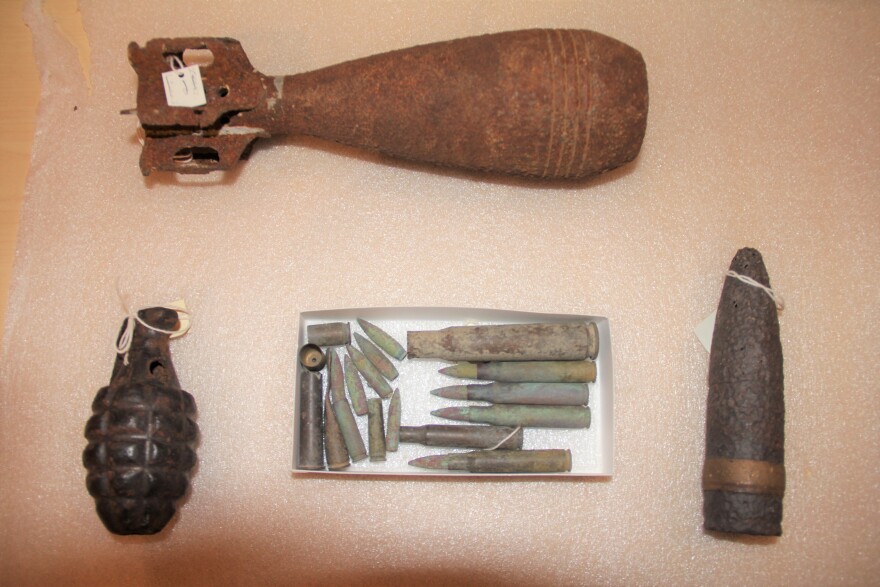12/07/2022 Stati Uniti, Alaska, Isole Aleutine, Unalaska
“If you ever come across anything suspicious like this item, please do not pick it up, contact your local law enforcement agency for assistance”
By Theo Greenly
The U.S. Army Corps of Engineers visited Unalaska in late June to teach Unalaskans about unexploded ordnance—that is, undetonated explosives. The U.S. military left lots of unexploded ordnance when they were stationed in the Aleutian Islands during World War II. And grenades, chemical weapons and other munitions have been turning up on the island’s hiking trails and beaches for decades. Brain McComas put in 20 years as an explosive ordnance master blaster, and now is a safety specialist with the corps. He led the classes, and taught the participants about the 3Rs of Explosives Safety: Recognize, Retreat and Report. “So you want to recognize, ‘Hey this might be an ordnance item, let me get out of the area,’” McComas said. McComas stressed the importance of leaving the same way you came in, because there may be more explosives in the area. “And then you call the police department, or the local authority that responds to your area,” McComas said. But recognizing ordnance isn’t always so easy. McComas said things can change appearances after sitting outside for years or decades. Even he’s been fooled. McComas said he once responded to a call on an Air Force base, where they found a mortar. “I just looked at it, and I said, ‘That’s a VW muffler.’ Because that’s what it looked like. And after contacting my office and doing research, it was a 1900s projectile, or mortar, called a Stokes mortar,” McComas said. Rylee Lekanoff attended one of the Unalaska trainings. The 11th-grader grew up in Unalaska, and despite such a prevalence of unexploded ordnance in the area, she said she didn’t learn about proper protocol in school. Rather, it was her family who taught her. “I heard a little bit about it growing up from my family. From my grandparents. One time my dad and a couple of his friends were out hiking and they found a live grenade,” Lekanoff said. The U.S. Army Corps of Engineers has made several trips to Unalaska lately to clean up old military sites. They plan to clean up petroleum contamination early this fall. But it’s a long and slow process, and Unalaskans will likely be dealing with military debris for many decades to come.
Photo-Source: kucb.org
Photo: Grenades, chemical weapons and other munitions have been turning up on the island’s hiking trails and beaches for decades. Theo Greenly
If you find anything that appears to be an explosive device, do not touch it, leave it where it is and call the police. We will contact the appropriate agencies to properly dispose of the item.
Dear editors, Biography of a bomb is aimed at highlighting the danger caused by unexploded bombs. Moreover, the most important aspect is that we work completely non profit, raising awerness about this topic is what drives us. We apologize if we make use of pictures in yours articles, but we need them to put a context in how findings are done. We will (and we always do) cite source and author of the picture. We thank you for your comprehension.





